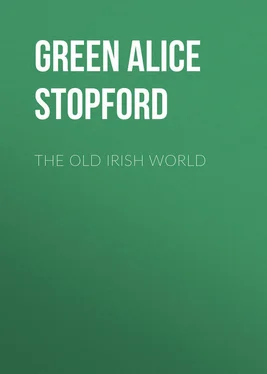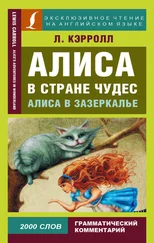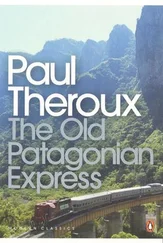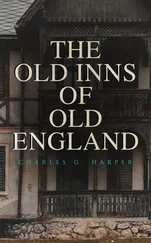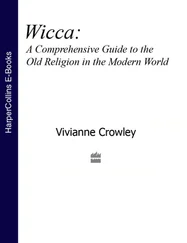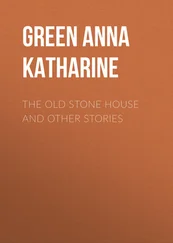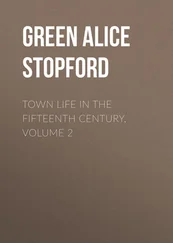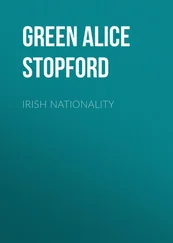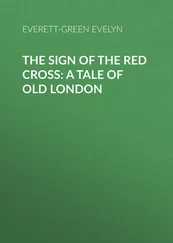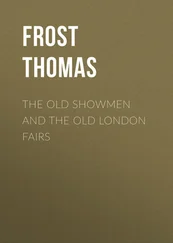Alice Green - The Old Irish World
Здесь есть возможность читать онлайн «Alice Green - The Old Irish World» — ознакомительный отрывок электронной книги совершенно бесплатно, а после прочтения отрывка купить полную версию. В некоторых случаях можно слушать аудио, скачать через торрент в формате fb2 и присутствует краткое содержание. Жанр: literature_19, foreign_antique, foreign_prose, Историческая проза, на английском языке. Описание произведения, (предисловие) а так же отзывы посетителей доступны на портале библиотеки ЛибКат.
- Название:The Old Irish World
- Автор:
- Жанр:
- Год:неизвестен
- ISBN:нет данных
- Рейтинг книги:4 / 5. Голосов: 1
-
Избранное:Добавить в избранное
- Отзывы:
-
Ваша оценка:
- 80
- 1
- 2
- 3
- 4
- 5
The Old Irish World: краткое содержание, описание и аннотация
Предлагаем к чтению аннотацию, описание, краткое содержание или предисловие (зависит от того, что написал сам автор книги «The Old Irish World»). Если вы не нашли необходимую информацию о книге — напишите в комментариях, мы постараемся отыскать её.
The Old Irish World — читать онлайн ознакомительный отрывок
Ниже представлен текст книги, разбитый по страницам. Система сохранения места последней прочитанной страницы, позволяет с удобством читать онлайн бесплатно книгу «The Old Irish World», без необходимости каждый раз заново искать на чём Вы остановились. Поставьте закладку, и сможете в любой момент перейти на страницу, на которой закончили чтение.
Интервал:
Закладка:
Now on this tale let me make two or three remarks.
We may ask, in the first place, why this one story is repeated on every occasion by historians of what I might call the “savage” type; why, omitting all other accounts, it is singled out as the typical instance of daily life in Ireland. Is this one of the views which, according to Dr. Mahaffy, it should be “the interest and duty” of impartial and loyal historians to maintain?
The story originated with a “Bohemian baron,” of whom we know nothing; it was reported by the English secretary of Mountjoy, whom he praises for the number of “rebels” he had “brought to their last home”; to both of them the Irish were nothing more than savages of a low type. We may remember that this is the only story of the kind cited from Ulster. A Spanish captain, escaped from the Armada, travelled through Connacht and Ulster and the O’Cahan country for several months of hiding from English soldiers; he too talked Latin in the many Irish houses which gave him shelter, but in the book of his wanderings there is no such incident as this.
There would seem to be need of some strictness of enquiry – some caution in discussing the tale. At the best the outlines of the baron’s story are vague. What decorations he himself may have introduced into it, and what further ornaments Fynes Moryson may have added, we do not know. We may, perhaps, judge by the embellishments which later writers have introduced. It is possible that the baron and the secretary, not inferior to their successors in contempt of the Irish, may have equalled them also in literary skill and the gift of embroidering a narrative. Let us see, therefore, some of these decorations.
Froude takes up the tale: – “If Fynes Moryson may be believed, the daughters of distinguished Ulster chiefs squatted on the pavement round the hall fires of their father’s castles, in the presence of strangers, as bare of clothing as if Adam had never sinned.” Here we see the “women,” who, for all the original story has to tell us, might be servants, dependants, or refugees gathered in from the war and pillage by which O’Cahan’s country was then ravaged, are transformed into “daughters of chiefs,” the “house” turns into “pavements” by the “hall-fires of castles,” and the incident has become a universal custom.
Then Professor Mahaffy arrives with a series of versions. “O’Cahan, though living in a hovel, could speak Latin.” More particularly, it was a shantie of mud and wattles, without rafters, and the cattle and swine occupied the same room as the masters; so he explains in a lecture on “Elizabethan Ireland.” A more circumstantial account appears in “An Epoch in Irish History.” In this the traveller is received by the “ladies of the chieftain’s household.” “They brought him into the thatched cabin which was their residence,” and throwing off their mantles invited him to do likewise before the chief came in – an invitation which the unknown “women” of the baron’s tale did not give. The baron’s “house” has already changed into castles with pavements, then into a hovel, and a thatched cabin, but the picture of savagery is not yet lurid enough, and there is a further transformation which, possibly from its supposed importance, is dragged into a description of society in the Dublin Georgian houses of the 18th century. “The O’Cahan in his wigwam, surrounded by his stark naked wives (why not squaws?) and daughters, addressed the astonished foreign visitor in fluent Latin.” The “wigwam” and the “wives” show the unimpaired fertility of Professor Mahaffy’s imagination. His pronouncements, the Irish Times assures us of this essay, “carry historical value of the highest degree.” It will be interesting to watch his further adornments of his favourite tale. It will also be interesting to see how long professors of Trinity College will still invite Irish students to enter there by offering this curious bait of conventional insults to their race and country, and new varieties of old slanders.
We might remember the scene in Galway a few years later, where high-born ladies, plundered of all their property by the rapacious soldiers, sinking with shame before the gaze of the public in their ragged clothes, covered themselves with embroidered table-covers, or a strip of tapestry taken from the walls, or lappets cut from the bed-curtains, or with blankets, sheets, or table-cloths. “You would have taken your oath,” says the contemporary writer, “that all Galway was a masquerade, the unrivalled home of scenic buffoons, so irresistibly ludicrous were the varied dresses of the poor women.” Why do not the Colonial historians give this scene as showing the habitual taste and pleasure of the Galway ladies?
Dr. Mahaffy has some other lights to throw on Irish history. “The contempt for traders as such … is,” he says, “like all such prejudice in Ireland, the survival of the contempt which the meanest members of any Irish clan felt for any profession save that of arms, and the preying on the churl.” The despisers of trade whom he is describing in this passage are the English landowners of the Williamite settlement, who had finally ousted the Irish from their lands, and taken them over as Protestant Englishmen, men of “a better race.” This conquering class naturally felt a contempt for their victims, the evicted Catholic Irish, who were allowed for the benefit of their lords and rulers to plough and to trade, while deprived of civil and social rights. But I do not know how those lordly squires would like to have heard that they represented the prejudices of “the meanest member of an Irish clan,” accustomed to prey on “the churl,” whoever he was. As for the Irish clansman who is supposed to look on traders as outcasts, he appears to be a fiction of the essayist’s fancy. Where in Irish records will proofs be found of contempt for a trader? Their story seems to be quite the other way. It may be convenient, however, for the defaming of the Irish to despise and ignore those records. Moreover, since Irish abbeys and cathedrals have been pronounced by Mr. Litton Falkiner not to be like the English ones, why need an Irish writer stoop into their ruins to seek out the story written there? No, it is easier to keep the slander running, to swell its volume, and to increase its violence. Yet in those ruins any man who will may look upon the countless tombs of Irishmen who (so long as the conqueror’s law allowed their desolate companies to enter the ancient shrines) were borne by their friends to rest in the roofless nave or before the high altar under great slabs with the signs of their trade, the tailor’s instruments, the carpenter’s tools, and the mason’s, the labourer’s plough, and the trader’s ship, deeply graven beside their names – no emblems of shame in those last sanctuaries of the Irish people.
Social life in Ireland, through all the ages, Dr. Mahaffy describes as especially immoral. The young girls, he says, were generally accessible to the squire and his sons all through Irish history, and suffered no disgrace, but married all the better for such an adventure. “All through Irish history” is a liberal and characteristic phrase to use of English squires and their sons. The tradition of absolute landlord power still lives in the Irish country-side, when girls were told the price at which they might save their family from being driven out of the home held by their ancestors for hundreds of years, and left to die on the roadside of hunger, or in the coffin-ship of plague. With security of tenure for the Irish poor such ordeals have passed into history. As for reports of English tourists, they resemble the travellers’ tales which everywhere and at all times various countries have heard on the manners of their neighbours. It is well to remember Gibbon’s reflection on general charges of this sort. Manuel, Emperor of the East, visited England in 1400, and coming from Constantinople was shocked at English conduct: – “The most singular circumstance of their manners,” he reported, “is their disregard of conjugal honour and of female chastity. In their mutual visits, as the first act of hospitality, the guest is welcomed in the embraces of their wives and daughters; among friends they are lent and borrowed without shame; nor are the islanders offended at this strange commerce.” “We may smile at the credulity, or resent the injustice of the Greek,” Gibbon reflects, “but his credulity and injustice may teach an important lesson; to distrust the accounts of foreign and remote nations, and to suspend our belief of every tale that deviates from the laws of nature and the character of man.”
Читать дальшеИнтервал:
Закладка:
Похожие книги на «The Old Irish World»
Представляем Вашему вниманию похожие книги на «The Old Irish World» списком для выбора. Мы отобрали схожую по названию и смыслу литературу в надежде предоставить читателям больше вариантов отыскать новые, интересные, ещё непрочитанные произведения.
Обсуждение, отзывы о книге «The Old Irish World» и просто собственные мнения читателей. Оставьте ваши комментарии, напишите, что Вы думаете о произведении, его смысле или главных героях. Укажите что конкретно понравилось, а что нет, и почему Вы так считаете.
